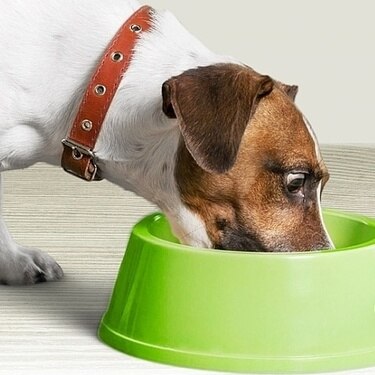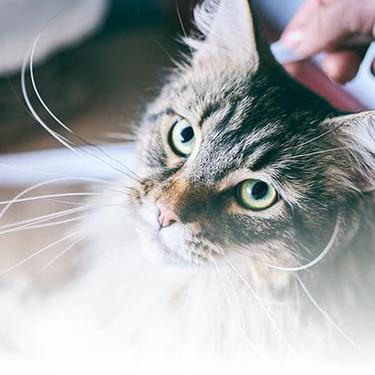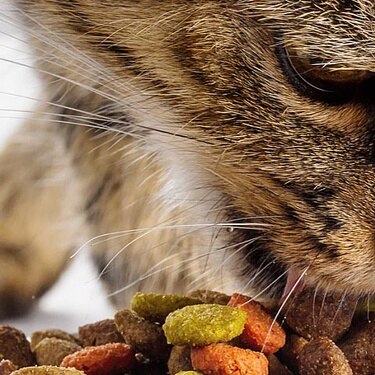
-
Find the right food for your petTake this quiz to see which food may be the best for your furry friend.Find the right food for your petTake this quiz to see which food may be the best for your furry friend.Featured products
 Puppy Food
Puppy FoodHill's Science Plan Puppy Multipack Wet Dog Food with Chicken & Beef are complete premium pet foods for growing puppies from weaning until 1 year old and for pregnant and nursing dogs. Your puppy will love these deliciously smooth and savoury minced loaves, formulated for balanced nutrition and overall health.
Shop Now Mature Adult Dog Food
Mature Adult Dog FoodHill's Science Plan Mature Adult Multipack Wet Dog Food with Chicken & Beef are complete premium pet foods for mature adult dogs from 7 years. Your dog will love these deliciously smooth and savoury minced loaves, formulated to deliver the appropriate amount of energy to support the needs of adult dogs.
Shop Now Adult Wet Dog Food with Beef
Adult Wet Dog Food with BeefHill's Science Plan Adult Multipack Wet Dog Food with Chicken, Beef & Turkey are complete premium pet foods for adult dogs from 1 year. Your dog will love these deliciously smooth and savoury minced loaves, formulated for balanced nutrition and overall health.
Shop NowFeatured products Light Adult Multipack Wet Cat Food with Chicken & Ocean Fish
Light Adult Multipack Wet Cat Food with Chicken & Ocean FishTender chicken chunks in gravy for cats, with L-carnitine and fewer calories for ideal weight management. Packed with high-quality protein, omega-6s, and vitamin E for shiny fur and healthy skin.
Shop Now Adult Multipack Wet Cat Food with Beef, Ocean Fish & Chicken
Adult Multipack Wet Cat Food with Beef, Ocean Fish & ChickenTender chunks in gravy for cats, with high-quality protein to maintain lean muscle. With vitamin E and omega-3s & -6s for healthy skin and balanced minerals to support healthy vital organs.
Shop Now Mature Adult Wet Cat Food with Chicken
Mature Adult Wet Cat Food with Chicken
Tender chicken chunks in gravy for mature adult cats. Made with easy-to-digest ingredients, high-quality protein for lean muscle maintenance and antioxidant vitamins C+E for optimal health.
Shop Now -
Dog
- Dog Tips & Articles
-
Health Category
- Weight
- Food & Environmental Sensitivities
- Urinary
- Digestive
- Joint
- Kidney
-
Life Stage
- Puppy Nutrition
- Adult Nutrition
- Senior Nutrition
Cat- Cat Tips & Articles
-
Health Category
- Weight
- Skin & Food Sensitivities
- Urinary
- Digestive
- Kidney
-
Life Stage
- Kitten Nutrition
- Adult Nutrition
Featured articles The Incredible Science Behind Your Pet's Microbiome
The Incredible Science Behind Your Pet's MicrobiomeLearn what your pet's microbiome is, how it contributes to your pet's gut and overall health, and why nutrition is important in maintaining healthy microbiomes.
Read More Show some love with wet foods: a great choice for pets with health issues
Show some love with wet foods: a great choice for pets with health issuesShow some love with wet foods: a great choice for pets with health issues.
Read More The Right Diet For Your Pet
The Right Diet For Your PetIn people, the right diet is very important. If you are eating the wrong way for your metabolism, activity level, age and lifestyle you could end up with health issues.
Read More -


Is your cat limping and you don't know why? It could be their paw, a muscle, or a joint that's bothering them — but they won't be able to meow the exact location of what's ailing them. Cats may limp for a variety of reasons. So, it's important to understand what to look for and learn how to help alleviate their distress
Common Causes of Limping
Sometimes, your cat may be limping from a simple accident. They may have got something stuck in their paw pad, or they may even have a slight muscle strain. Wait until your cat is calm and lying down. Then, try to inspect their leg and paw. Look for noticeable swelling, redness or signs of pain like meowing or flinching when you lightly touch the area. Wag! points out that a cat with a paw pad injury, such as an ingrown claw, may also lick one paw excessively or avoid walking on that foot. Even if you don't see any swollen paws, and they seem to be doing most of their usual activities, a little limp may warrant calling your veterinarian to prevent an infection setting in.
One danger for cats that can sometimes cause leg injuries is "high rise syndrome," says the Animal Medical Center of New York. A curious cat can easily jump out of an open window and fall. Make sure your windows have strong screens and never leave them open when you're not at home. Even a jump from a high bookshelf can injure an elderly (or a very small) cat, so be aware of how much access they have to high perches.
Arthritis is another issue that can cause cat limping. An older cat who walks stiffly, no longer jumps onto or off of the couch, or suddenly becomes reclusive may be suffering from joint pain. Your vet may recommend changing their food to one that supports joint health or fixing them a new napping corner in a warm, low-to-the-ground spot.
If things do not improve within twenty-four hours, it is best to have the limp looked at by a vet to avoid any long-term damage. Cats are great at hiding their pain, so if they are showing signs, it is likely severe enough that your vet should take a look. Your vet may also take an X-ray to determine the cause of your cat's leg injury.


Tasty Tips
Getting to the Vet
If your cat is in pain, the process of coaxing them into their cat carrier for a trip to the vet may be more difficult than usual. Here are a few things to keep in mind to make the trip less stressful for you and your fur baby:
- Try putting a blanket or shirt that your cat likes to snuggle up to on inside the carrier — one that smells like you may calm them down. Line it with a sprinkle of catnip or a treat and one of their favourite soft toys.
- If your cat will not go into the carrier on their own, handle them gently and be cautious about forcing them into the carrier. You don't want them to injure themselves more. You can put them on a blanket and wrap them up to help them feel secure before placing them in the carrier to risk injury to them or yourself.
When to Be Concerned
Unfortunately, some cat leg injuries will take time to heal. You may have heard of athletes suffering from an anterior cruciate ligament (ACL) tear, but did you know cats can also have ACL injuries? The Atlantic Veterinary Hospital writes that kitty ACL tears usually result from jumping or falling from high places, and are more common in overweight cats. A visit to the vet will confirm if the injury requires surgery, pain medication, or another treatment.
When cat limping is more severe due to an injury or serious illness, it is very important to limit your cat's movement and not allow them to jump or run. Consider borrowing a large dog crate to keep your cat contained while they heal. Make sure you get one large enough for them to have space to walk around between a small litter pan, water bowl and bed or blanket. You can also give them a room in your house, away from other pets and children.
Even if you don't give your kitty a private room, you'll need to make sure their litter box is one that does not require much effort to get into and out of. A shallow baking tray or a small pan for kittens will keep them from injuring themselves further or eliminating outside the box from pain.
It is also important that you never give your cat medication for their pain that your vet did not prescribe. Over the counter medication that is made for humans can be toxic to cats and can make the situation exponentially worse.
Whether your cat is limping due to something minor or major, it is still important to spend quality time with them and try to keep your kitty calm and relaxed. Giving them extra cuddles and some special treats (but not too many) will make the recovery time more bearable as well. It is also important to note that because your cat can't be as active during their recovery time as normal, they won't be able to get adequate exercise. It is important to follow your vet's recommendations for properly feeding them so that they do not put on unnecessary weight and exacerbate their leg injury. As a pet parent, it's never fun to see your pet in pain, but if you follow your vet's recommendations, your companion will be back to their frisky self before you know it!


Chrissie Klinger is an educator, writer and mother of two children, three dogs and three cats. Her dog Jake loves sitting on her lap every chance he gets! She enjoys living an active and eco-friendly lifestyle in rural Pennsylvania.
Related products

Tender chicken chunks in gravy for mature adult cats. Made with easy-to-digest ingredients, high-quality protein for lean muscle maintenance and antioxidant vitamins C+E for optimal health.

Tender chicken chunks in gravy for cats, with L-carnitine and fewer calories for ideal weight management. Packed with high-quality protein, omega-6s, and vitamin E for shiny fur and healthy skin.


Tender chunks in gravy for cats, with high-quality protein to maintain lean muscle. With vitamin E and omega-3s & -6s for healthy skin and balanced minerals to support healthy vital organs.
Related articles

There are three common ways to feed a cat. Each way has its advantages and disadvantages.

Learn how to make homemade cat treats that are healthy for your pet with this recipe from Hills Pet Nutrition.

From essential vitamins & minerals to different types of meat, learn what to look for when choosing the best cat food for your feline.

Chocolate is known to be poisonous for dogs, but it can also be toxic for cats. Learn why chocolate is bad for cats & what to do if she's eaten it.

Put your cat on a diet without them knowing
Our low calorie formula helps you control your cat's weight. It's packed with high-quality protein for building lean muscles, and made with purposeful ingredients for a flavourful, nutritious meal. Clinically proven antioxidants, Vitamin C+E, help promote a healthy immune system.
Put your cat on a diet without them knowing
Our low calorie formula helps you control your cat's weight. It's packed with high-quality protein for building lean muscles, and made with purposeful ingredients for a flavourful, nutritious meal. Clinically proven antioxidants, Vitamin C+E, help promote a healthy immune system.

